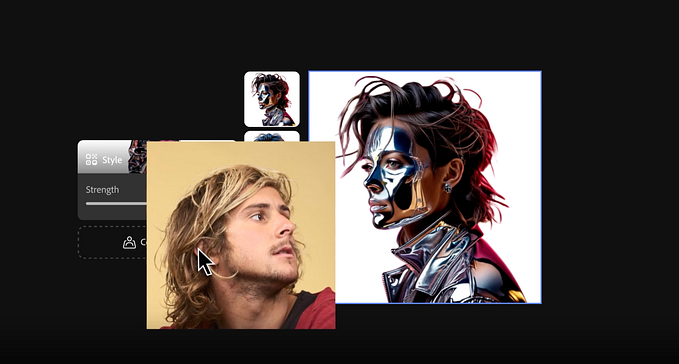How speculative design can enable thinking beyond the status quo
What does the term ‘speculating’ mean for you and your design practice?

Designing has always been about people; observing and understanding a peoples’ problem to the solution. Though a simple idea in concept, when met with profit-driven goals and current consumerist demands, design as a profession becomes a marketing and commercial reflex. Looking back into pivotal moments of early human history, one can weave together thousands of great artists and designers from all walks of life into an incredible image of design excellence.
Since the mid-20th century peak modernism, design evolved into one of the key actors of technological determinism, primarily focusing on the market and failing to systematically re-think potentially negative implications of technological progress. For example, in Tatiana Schlossberg’s book, Inconspicuous Consumption addresses the physical manifestations of the internet, both in electricity and land consumption as a reflection of the way we think about governing the world. The creators of the speculative approach, Anthony Dunne and Fiona Raby propose a kind of design that is used as a tool to create not only things but ideas. This meant using design as a means of speculating about how things could be — to imagine possible futures.
Enter Speculative Design
Designers often draw inspiration based on the world we currently live in, and many designers inherently already practice speculative design. Speculative design asks “what if” and “what kind of society we might prefer to live in”, rather than devising on a 100 year long risk management strategy that address a totally unpredictable or unaddressable catastrophe. Speculative.hr says it best, “The approach and practice of speculative design is a particularly stimulative strategy for researching the “space” that lies beyond ‘current’ and the ’now’.”
The speculative approaches to design today can be primarily seen as a mindset rather than its traditional ways of designing. Speculative design embodies characteristics that are well equipped for our future. Today, it is no surprise that we are living in an era of convergence (of new and old) technologies, where the only constant is change, and this pace of change is accelerating faster than ever. Designers and producers, at work both inside and outside the profession, are contributing to a vast new commons, often using shared tools and technologies.
To speculate means to respond to this convergence by constant interaction between various practices, fields and disciplines. By combining these interactions one can create new tools, instruments, methods, for different needs.
Design Responsibly
In the 1920s, at the turn of the new Soviet Union, a group of Russian constructivist artists Moholy-Nagy, Lissitzky and Rodchenko transformed their individual artistic practices into a collective utopian vision, hoping to achieve a better and more egalitarian society. The fine artist became commonly known as the “constructor”. This revival of constructors paved way for designers in the 1960s to imagine a platform in which broader audiences are empowered to produce and critique. Designers like Kenya Hara, creative director of MUJI, first developed innovative models for socially responsible design.
In 2004, he produced the HAPTIC exhibition with various creators from multidisciplinary fields, including architecture, product design, fashion, graphics, interior design and textiles to explore the design of the senses, and how we perceive things with our senses. For Hara, a constructor for the avant-garde, design solution lies in collective rational mind rather than individual gain. While Hara’s ideas manifested as an exhibition over a decade ago, the philosophies have manifested themselves in devices like the Gamma Instrument from MIT Media Lab.
“I Prefer This World”
Designers today are transforming these philosophical ideas into something tangible. During my design workshops at Ryerson University and General Assembly, I ask students to participate in future-oriented whiteboarding challenges, where questions like “How might we understand companionship in the future?” or “How could our ideas of personal safety change in the next 100 years?”
These may seem like simple questions on the surface, the same questions also empower a collective authorship that enables this kind of new universal thinking. Designers are actively engaging with their societies politically and culturally, increasingly thinking globally and locally inside a tightly networked world.
More and more designers, enabled by technology, produce work on issues of sustainability and social justice and become the forefront of businesses. For example, Mexican architect Fernando Romero’s Border City concept encourages dual-nation transit and commerce in response to the US-Mexico border in place of a wall. Or the 2018 XPrize winner Skysource, reimagines a way to produce water from air to combat water shortages. Designers are looking beyond aesthetic practices and successful businesses to the broader effects on the culture they help create.
Design as a practice has inspired new models and frameworks. In the future, design as a profession and industry will continue to change and evolve, and the role of designers to discover new markets and businesses will require redefining everyday subjects.
Bernice Liu is a speculative designer, future thinker, and creative director of Noframe — a Toronto-based design lab. She has previously worked with companies like Ontario Science Center and Royal Bank of Canada. She has taught and built design curriculums at Ryerson University and General Assembly. She fundamentally believes that design can improve people’s lives, transform companies and drive change in culture.










![Adobe Illustrator > Adobe Firefly for Image Mockups [ Tennis! ]](https://miro.medium.com/v2/resize:fit:679/0*NuaHZ02J8DFqOLys.jpeg)
